-
 Bitcoin
Bitcoin $106,754.6083
1.33% -
 Ethereum
Ethereum $2,625.8249
3.80% -
 Tether USDt
Tether USDt $1.0001
-0.03% -
 XRP
XRP $2.1891
1.67% -
 BNB
BNB $654.5220
0.66% -
 Solana
Solana $156.9428
7.28% -
 USDC
USDC $0.9998
0.00% -
 Dogecoin
Dogecoin $0.1780
1.14% -
 TRON
TRON $0.2706
-0.16% -
 Cardano
Cardano $0.6470
2.77% -
 Hyperliquid
Hyperliquid $44.6467
10.24% -
 Sui
Sui $3.1128
3.86% -
 Bitcoin Cash
Bitcoin Cash $455.7646
3.00% -
 Chainlink
Chainlink $13.6858
4.08% -
 UNUS SED LEO
UNUS SED LEO $9.2682
0.21% -
 Avalanche
Avalanche $19.7433
3.79% -
 Stellar
Stellar $0.2616
1.64% -
 Toncoin
Toncoin $3.0222
2.19% -
 Shiba Inu
Shiba Inu $0.0...01220
1.49% -
 Hedera
Hedera $0.1580
2.75% -
 Litecoin
Litecoin $87.4964
2.29% -
 Polkadot
Polkadot $3.8958
3.05% -
 Ethena USDe
Ethena USDe $1.0000
-0.04% -
 Monero
Monero $317.2263
0.26% -
 Bitget Token
Bitget Token $4.5985
1.68% -
 Dai
Dai $0.9999
0.00% -
 Pepe
Pepe $0.0...01140
2.44% -
 Uniswap
Uniswap $7.6065
5.29% -
 Pi
Pi $0.6042
-2.00% -
 Aave
Aave $289.6343
6.02%
What is NFT? How does blockchain support non-fungible tokens?
NFTs are unique, blockchain-verified digital assets, unlike fungible cryptocurrencies. Their ownership and authenticity are secured on various blockchains, each with different transaction costs and speeds. Creating and selling NFTs involves minting, marketplace listing, and marketing, requiring careful risk assessment.
Mar 14, 2025 at 11:40 am
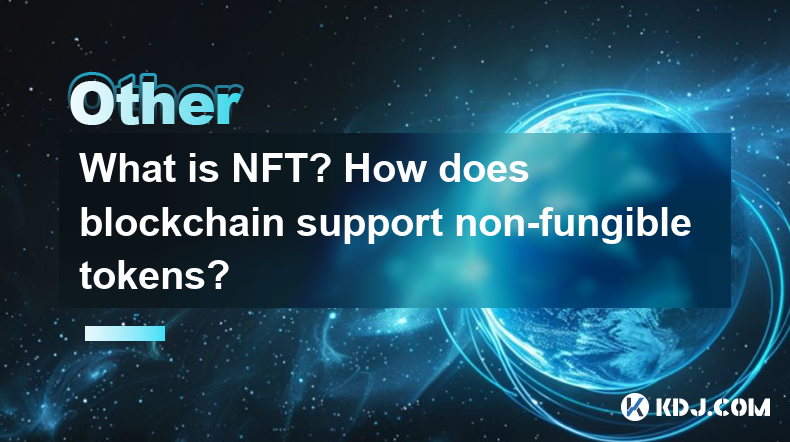
Key Points:
- NFTs are unique, non-interchangeable digital assets verified on a blockchain. Their uniqueness is their defining characteristic, unlike cryptocurrencies which are fungible.
- Blockchain technology provides the security, transparency, and immutability crucial for NFT existence and verification. It acts as a public ledger recording ownership and transaction history.
- Different blockchains support NFTs, each with its own strengths and weaknesses regarding transaction fees, speed, and scalability.
- Creating and selling NFTs involves several steps, including minting, listing on a marketplace, and marketing.
- Understanding the underlying technology and the potential risks is crucial before engaging with NFTs.
What is NFT?
Non-Fungible Tokens (NFTs) are unique digital assets representing ownership of something specific. Unlike cryptocurrencies like Bitcoin or Ethereum, which are fungible (interchangeable), each NFT is distinct and cannot be substituted for another. This uniqueness allows for the representation of digital or physical items, from digital art and collectibles to in-game items and real-world assets. The ownership and authenticity of an NFT are verified and secured through blockchain technology.
How does blockchain support non-fungible tokens?
Blockchain technology is the backbone of NFTs, providing the infrastructure necessary for their existence and secure trading. The immutable, decentralized nature of blockchain ensures that ownership records are transparent, verifiable, and tamper-proof. Every transaction involving an NFT is recorded on the blockchain, creating a permanent and auditable history of ownership. This eliminates the possibility of duplication or fraudulent claims.
Different Blockchain Networks for NFTs
Several blockchain networks support NFTs, each with its own characteristics. Ethereum, the most popular platform for NFTs, benefits from a large and established ecosystem. However, its high gas fees (transaction costs) can be a significant barrier. Other networks, like Solana, Tezos, and Flow, offer lower fees and potentially faster transaction speeds, but may have smaller communities and less established marketplaces. The choice of blockchain depends on factors like cost, speed, and the specific requirements of the NFT project.
The Process of Creating and Selling NFTs
Creating and selling an NFT involves several steps:
- Creating the digital asset: This could involve designing digital art, creating a 3D model, or even representing a physical item with a unique digital certificate.
- Choosing a blockchain: Select the appropriate blockchain network based on cost, speed, and community.
- Minting the NFT: This process involves creating a unique token on the chosen blockchain, associating it with the digital asset. This often involves using specialized software or platforms.
- Selecting a marketplace: Numerous NFT marketplaces exist, each with its own fees and features. Choosing the right one depends on the type of NFT and target audience.
- Listing the NFT: Once minted, the NFT is listed on the chosen marketplace with a price and description.
- Marketing and promotion: Effectively marketing the NFT is crucial for attracting buyers.
Understanding the Technology Behind NFTs
NFTs are built using smart contracts, self-executing contracts with the terms of the agreement directly written into code. These smart contracts automate the process of transferring ownership, ensuring that the transfer is secure and transparent. Understanding the basics of smart contracts and blockchain technology is vital for anyone involved in the NFT space.
Security and Risks Associated with NFTs
While blockchain technology offers significant security benefits, NFTs are not without risk. Scams and fraudulent projects are prevalent. Buyers should always conduct thorough due diligence before purchasing an NFT. This includes researching the project team, understanding the utility of the NFT, and verifying the authenticity of the NFT on the blockchain. Furthermore, the volatility of the cryptocurrency market can significantly impact the value of NFTs.
Common Questions and Answers:
Q: Are NFTs only for digital art?
A: No, NFTs can represent various digital and physical assets, including music, videos, collectibles, virtual real estate, and even physical items like artwork or tickets.
Q: How is the ownership of an NFT proven?
A: Ownership is proven through the blockchain. Each transaction is recorded on the public ledger, providing a verifiable history of ownership.
Q: What are the risks involved in buying NFTs?
A: Risks include scams, market volatility, and the potential for the NFT's value to decline. Thorough research and due diligence are essential.
Q: How much does it cost to create an NFT?
A: The cost varies depending on the blockchain used, the marketplace fees, and any additional services used during the minting process. Gas fees on Ethereum, for instance, can be substantial.
Q: Can I sell my NFT after I buy it?
A: Yes, NFTs are generally freely tradable on marketplaces. However, the price will fluctuate based on market demand.
Q: What are gas fees?
A: Gas fees are transaction fees paid to miners or validators on the blockchain network to process NFT transactions. They can vary significantly depending on network congestion.
Q: What is the difference between fungible and non-fungible tokens?
A: Fungible tokens are interchangeable (e.g., cryptocurrencies), while non-fungible tokens are unique and cannot be substituted for one another.
Q: Are NFTs environmentally friendly?
A: The environmental impact of NFTs depends heavily on the blockchain used. Some blockchains are more energy-efficient than others. This is an ongoing concern within the NFT space.
Disclaimer:info@kdj.com
The information provided is not trading advice. kdj.com does not assume any responsibility for any investments made based on the information provided in this article. Cryptocurrencies are highly volatile and it is highly recommended that you invest with caution after thorough research!
If you believe that the content used on this website infringes your copyright, please contact us immediately (info@kdj.com) and we will delete it promptly.
- Check Your Change! That £2 Coin Could Be Worth £500!
- 2025-06-19 18:45:12
- Bitcoin, Solaris, and Mobile Mining: The Next Big Thing?
- 2025-06-19 18:45:12
- Mantle, Crypto, and Blockchain: UR Neobank Revolutionizes TradFi and DeFi
- 2025-06-19 20:05:12
- XRP Price, Ripple Transfer, and Market Panic: What's the Real Story?
- 2025-06-19 19:25:12
- Coin Master Free Spins & Links: Your Daily Dose of Spins (June 19, 2025)
- 2025-06-19 18:52:12
- RAY Price Rockets with Volume Surge: Is This the Start of a Stock Rally?
- 2025-06-19 19:05:12
Related knowledge

What exactly is a smart contract? A simple explanation of its role
Jun 19,2025 at 11:49am
Understanding the Concept of a Smart ContractA smart contract is a self-executing contract with the terms of the agreement directly written into lines of code. It operates on blockchain technology and automatically enforces and executes agreements without the need for intermediaries. Unlike traditional contracts that rely on legal systems to uphold thei...
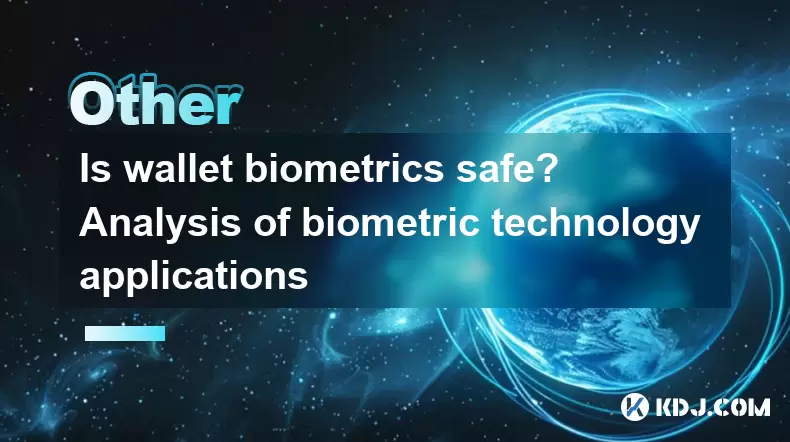
Is wallet biometrics safe? Analysis of biometric technology applications
Jun 18,2025 at 12:14pm
Understanding Biometric Technology in Cryptocurrency WalletsBiometric technology has become increasingly prevalent in the realm of digital security, especially within cryptocurrency wallets. This form of authentication uses unique physical or behavioral traits—such as fingerprint scans, facial recognition, voice patterns, and even iris scans—to verify a...
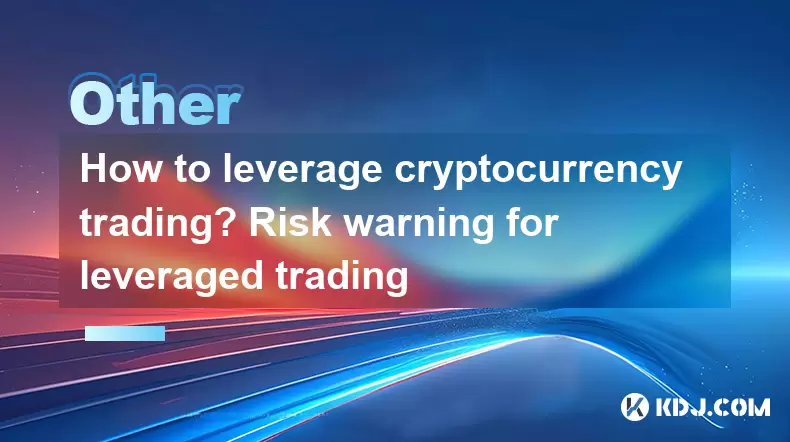
How to leverage cryptocurrency trading? Risk warning for leveraged trading
Jun 16,2025 at 05:42pm
Understanding Leverage in Cryptocurrency TradingLeverage in cryptocurrency trading allows traders to open positions larger than their account balance by borrowing funds from the exchange or platform. This mechanism amplifies both potential profits and losses. The leverage ratio, often expressed as 5x, 10x, or even 100x, determines how much a trader can ...
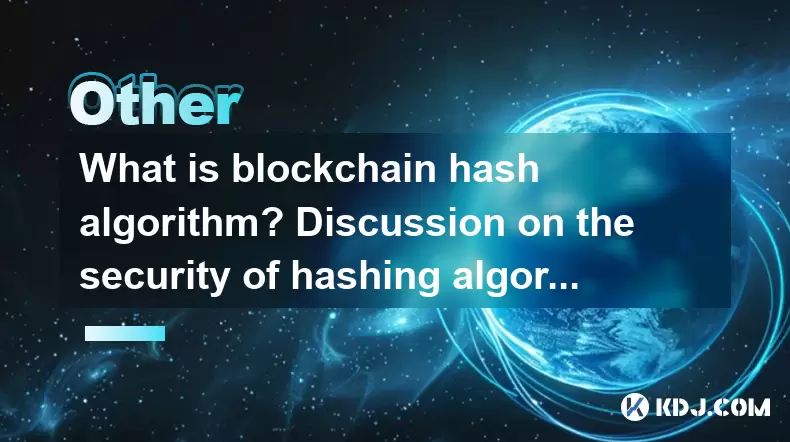
What is blockchain hash algorithm? Discussion on the security of hashing algorithms
Jun 13,2025 at 09:22pm
Understanding the Role of Hash Algorithms in BlockchainA hash algorithm is a cryptographic function that takes an input (or 'message') and returns a fixed-size string of bytes. The output, typically represented as a hexadecimal number, is known as a hash value or digest. In blockchain technology, hash algorithms are foundational to ensuring data integri...

How does Ethereum PoS mechanism work? Analysis of advantages and disadvantages of PoS mechanism
Jun 14,2025 at 09:35pm
Understanding the Basics of Ethereum's PoS MechanismEthereum transitioned from a Proof-of-Work (PoW) to a Proof-of-Stake (PoS) consensus mechanism through an upgrade known as The Merge. In PoS, validators are chosen to create new blocks based on the amount of cryptocurrency they are willing to stake as collateral. This replaces the energy-intensive mini...
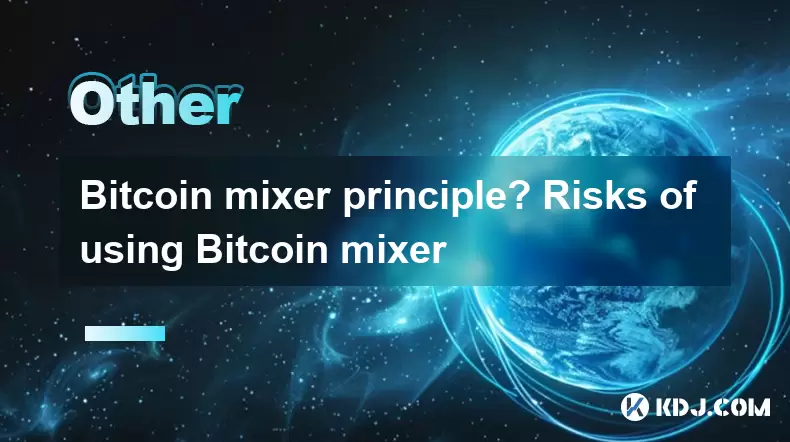
Bitcoin mixer principle? Risks of using Bitcoin mixer
Jun 14,2025 at 05:35am
What Is a Bitcoin Mixer?A Bitcoin mixer, also known as a Bitcoin tumbler, is a service designed to obscure the transaction trail of Bitcoin by mixing it with other coins. The core idea behind this tool is to enhance privacy and make it more difficult for third parties, such as blockchain analysts or law enforcement agencies, to trace the origin of speci...

What exactly is a smart contract? A simple explanation of its role
Jun 19,2025 at 11:49am
Understanding the Concept of a Smart ContractA smart contract is a self-executing contract with the terms of the agreement directly written into lines of code. It operates on blockchain technology and automatically enforces and executes agreements without the need for intermediaries. Unlike traditional contracts that rely on legal systems to uphold thei...

Is wallet biometrics safe? Analysis of biometric technology applications
Jun 18,2025 at 12:14pm
Understanding Biometric Technology in Cryptocurrency WalletsBiometric technology has become increasingly prevalent in the realm of digital security, especially within cryptocurrency wallets. This form of authentication uses unique physical or behavioral traits—such as fingerprint scans, facial recognition, voice patterns, and even iris scans—to verify a...

How to leverage cryptocurrency trading? Risk warning for leveraged trading
Jun 16,2025 at 05:42pm
Understanding Leverage in Cryptocurrency TradingLeverage in cryptocurrency trading allows traders to open positions larger than their account balance by borrowing funds from the exchange or platform. This mechanism amplifies both potential profits and losses. The leverage ratio, often expressed as 5x, 10x, or even 100x, determines how much a trader can ...

What is blockchain hash algorithm? Discussion on the security of hashing algorithms
Jun 13,2025 at 09:22pm
Understanding the Role of Hash Algorithms in BlockchainA hash algorithm is a cryptographic function that takes an input (or 'message') and returns a fixed-size string of bytes. The output, typically represented as a hexadecimal number, is known as a hash value or digest. In blockchain technology, hash algorithms are foundational to ensuring data integri...

How does Ethereum PoS mechanism work? Analysis of advantages and disadvantages of PoS mechanism
Jun 14,2025 at 09:35pm
Understanding the Basics of Ethereum's PoS MechanismEthereum transitioned from a Proof-of-Work (PoW) to a Proof-of-Stake (PoS) consensus mechanism through an upgrade known as The Merge. In PoS, validators are chosen to create new blocks based on the amount of cryptocurrency they are willing to stake as collateral. This replaces the energy-intensive mini...

Bitcoin mixer principle? Risks of using Bitcoin mixer
Jun 14,2025 at 05:35am
What Is a Bitcoin Mixer?A Bitcoin mixer, also known as a Bitcoin tumbler, is a service designed to obscure the transaction trail of Bitcoin by mixing it with other coins. The core idea behind this tool is to enhance privacy and make it more difficult for third parties, such as blockchain analysts or law enforcement agencies, to trace the origin of speci...
See all articles

























































































